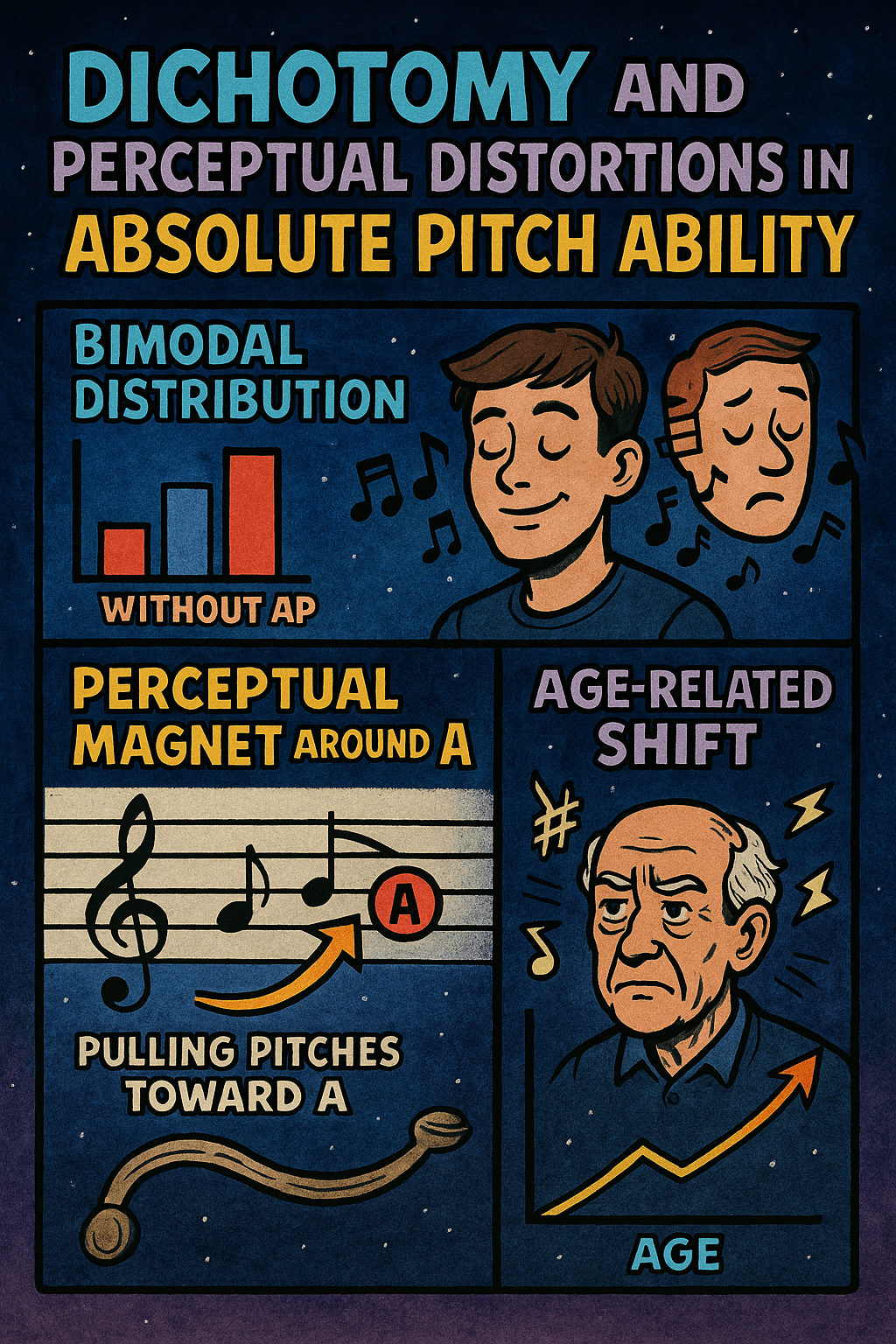Dichotomy and perceptual distortions in absolute pitch ability
Abstract
Absolute pitch (AP) is the rare ability to identify the pitch of a tone without the aid of a reference tone. Understanding both the nature and genesis of AP can provide insights into neuroplasticity in the auditory system. We explored factors that may influence the accuracy of pitch perception in AP subjects both during the development of the trait and in later age. We used a Web-based survey and a pitch-labeling test to collect perceptual data from 2,213 individuals, 981 (44%) of whom proved to have extraordinary pitch-naming ability. The bimodal distribution in pitch-naming ability signifies AP as a distinct perceptual trait, with possible implications for its genetic basis. The wealth of these data has allowed us to uncover unsuspected note-naming irregularities suggestive of a ”perceptual magnet” centered at the note ”A.” In addition, we document a gradual decline in pitch-naming accuracy with age, characterized by a perceptual shift in the ”sharp” direction. These findings speak both to the process of acquisition of AP and to its stability.
Content
The nature of absolute pitch (AP), also known as perfect pitch, lies outside the ability of most humans. It is an unusual perceptual gift, rigorously defined as the ability to name the pitch of a tone without the use of a reference tone. AP is distinguishable from relative pitch, a skill common in trained musicians, in which a pitch is rapidly derived by calculation of its interval from a reference pitch. AP can be loosely regarded as the musical equivalent of color labeling of visual frequencies, an ability common in humans.
http://www.pnas.org/content/104/37/14795.full.pdf
PDF – PNAS-2007-Athos-14795-800
Absolute pitch, also known as perfect pitch, refers to the ability to identify or produce musical pitches without the aid of a reference tone. While some individuals possess this ability naturally, it is relatively rare and the subject of much research in psychology and neuroscience.
The concept of dichotomy and perceptual distortions in absolute pitch ability may relate to the variability in how individuals experience and perceive pitch. Here are some key points to consider:
1. Dichotomy: Absolute pitch ability is often viewed as a dichotomous trait, meaning that individuals either possess it (absolute pitch possessors) or do not (non-absolute pitch possessors). Research has shown that the prevalence of absolute pitch is higher among individuals who began musical training at an early age and among speakers of tonal languages such as Mandarin Chinese. However, there is variability in the degree and accuracy of absolute pitch abilities among possessors.
2. Perceptual Distortions: Even among individuals with absolute pitch, there can be perceptual distortions or variability in pitch perception. For example, some absolute pitch possessors may be more accurate in identifying pitches produced by certain instruments or in specific musical contexts than others. Additionally, research has shown that absolute pitch possessors may be susceptible to pitch context effects, where the perceived pitch of a note can be influenced by the surrounding musical context.
3. Developmental Factors: The development of absolute pitch abilities may be influenced by both genetic and environmental factors. Early exposure to music and musical training during critical periods of auditory development are thought to play a crucial role in the acquisition of absolute pitch abilities. However, the extent to which these abilities can be developed later in life remains a topic of debate.
4. Neural Mechanisms: Studies using neuroimaging techniques such as functional magnetic resonance imaging (fMRI) have provided insights into the neural mechanisms underlying absolute pitch perception. Research suggests that individuals with absolute pitch may have differences in brain structure and function, particularly in regions associated with auditory processing and sensory memory.
In summary, while absolute pitch ability is often viewed as a binary trait, there is variability in how individuals experience and perceive pitch, even among possessors of absolute pitch. Understanding the factors that contribute to these perceptual differences can provide valuable insights into the nature of pitch perception and the development of musical abilities.
